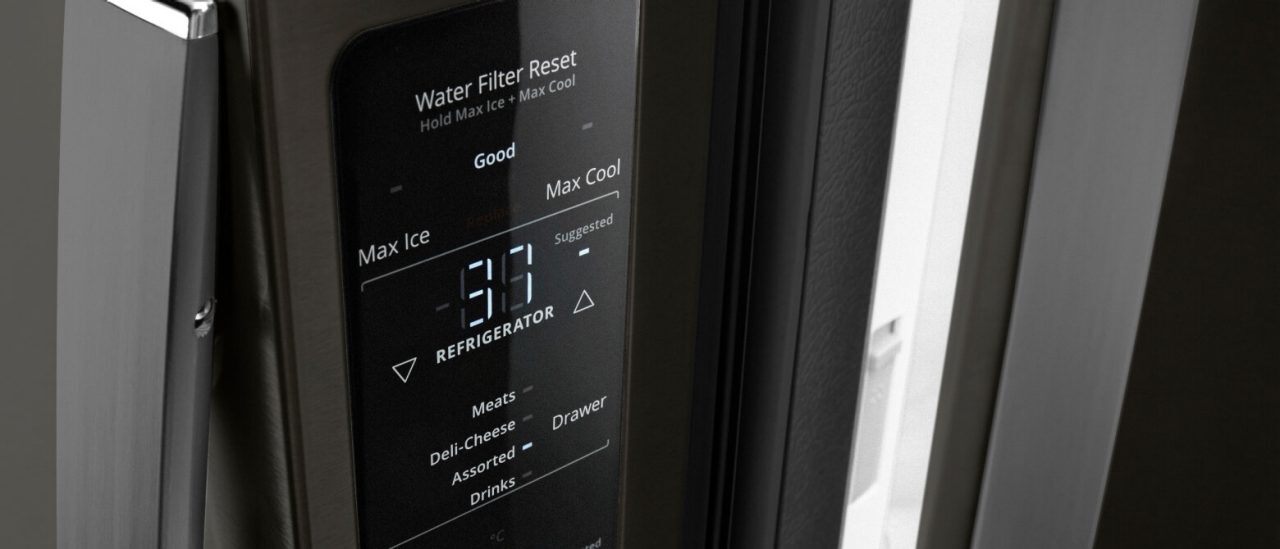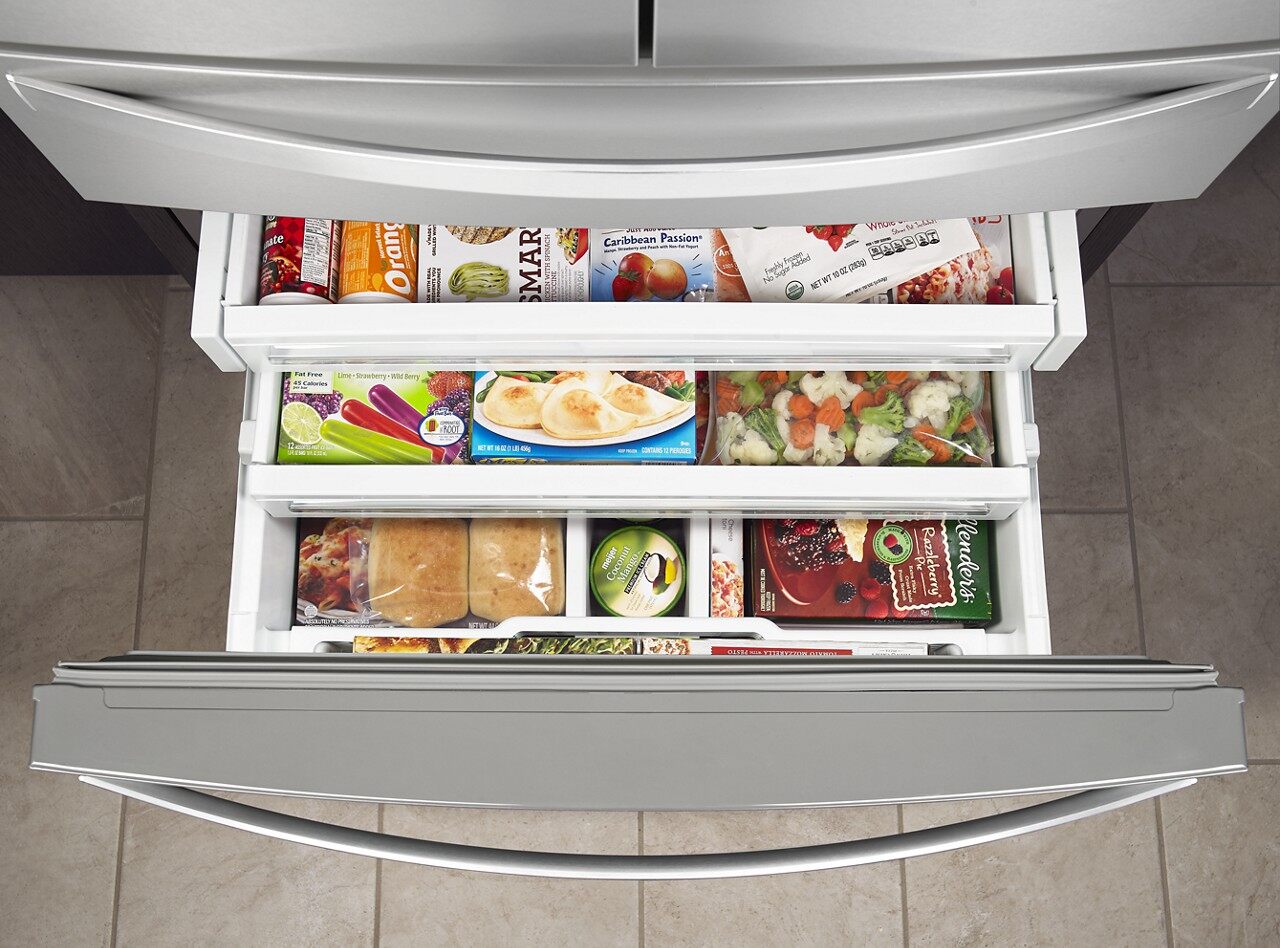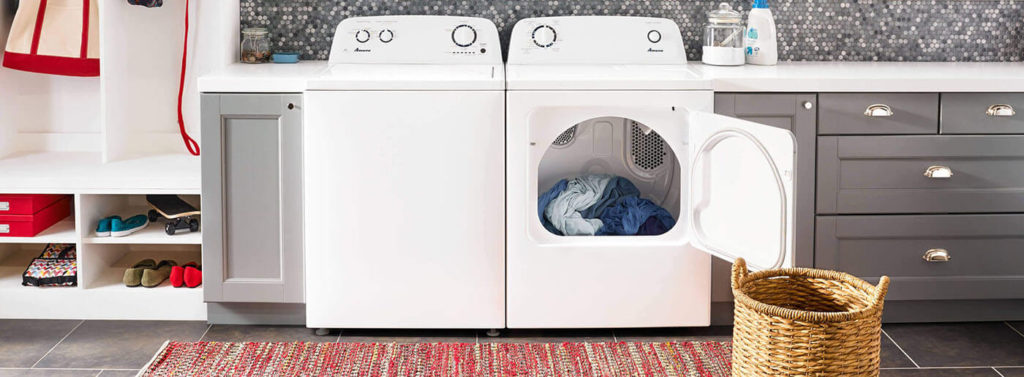For most groceries, the recommended fridge temperature isn’t a secret: it should be around 3°C (37°F) for the refrigerator; however a range of 0 – 4°C (33-40°F) is generally accepted as safe for most purposes. However, if the appliance doesn’t have temperature markings but rather a scale of 1-5, 1-10, or similar, it may not be so easy to set the ideal refrigerator temperature. Always start with the temperature recommended in the Use and Care Guide.
Since different models of refrigerators may have different scales corresponding to specific temperatures, sometimes it could be best to see how the food’s reacting to the current setting and adjust accordingly. Consult your user guide or owner’s manual. But, the temperature isn’t the only important factor when it comes to preserving groceries.
The performance of the fridge may also depend on the environment, how full it is, and if you know how to organize the fridge properly.
Knowing If the Refrigerator Temperature Is Right
You should be able to tell if your fridge is working at the right temperature in everyday use. Spoiled milk or juice could be a sign that your refrigerator temperature is too high, especially if it happens repeatedly through no fault of the fridge users. Similarly, you can also see if the temperature may be set too low – if the drinks are half frozen, for example, the fridge isn’t set properly.
Another way to discover if your fridge is over-cooling is to check for ice on the food. Additionally, if there’s ice on the bottom parts inside the fridge, it could mean that it’s emptier than it should be.
Finally, if the fresh food has started to spoil, it may mean that the temperature isn’t set low enough. A warm fridge can’t prevent bacteria and even mould growth, so the affected food may last a fraction of the time it would in an adequately cooled environment.

Safe Food Storage
Besides the ideal refrigerator temperature, you should know some other techniques for storing food. First, perishable foods have to be refrigerated or frozen as soon as possible. Everything that belongs in the fridge should be in there within the first two hours of purchase. These include fresh meat, cheese, seafood, and other perishable food items. Food exposed to hot temperatures needs to be stored within one hour of purchase. For the best results, check the directions on the packaging – you’ll usually learn right away if the item has to be kept cold, so you’ll know exactly what to do with it.
It’s not a bad idea to get a thermometer for the appliance. This can help you control the temperature and adjust it as needed. The best refrigerator temperature for most items is about 3°C (37°F), however a range of 0 – 4°C (33-40°F) is generally accepted as safe for most purposes. If the temperature is raised over 4°C (40°F) it could be harmful when storing dairy, eggs, meat and produce, which may naturally contain foodborne bacteria.
Inspect your food before consuming, even if the conditions are ideal. The best indicator of spoiled food is the look, smell, and taste. If you notice anything suspicious, it’s best to throw away the item.
Even food that doesn’t show any signs of spoilage might not be suitable for eating. Certain bacteria, different from those responsible for food decomposition, might cause illnesses. That’s why it’s crucial to always cook meat, seafood, and eggs before consuming. To reduce this and other risks, it’s best to follow the usual practice when handling food items: wash your hands, clean all surfaces and tools that have been in contact with fresh meat, separate fresh and prepared food, and finally, cook the food for at least the minimum recommended time and at a sufficient temperature.

Expert Tip: Stop the bacteria
When marinating any type of food, especially meat and poultry, place the marinated food in the fridge. The low temperature will help prevent the bacteria from multiplying and also help the food to be marinated thoroughly.
Tips and Tricks for Fridge Usage
Clean any spills in the fridge as soon as they occur, and clean the whole appliance on the inside regularly. Consider thoroughly cleaning the fridge three or four times a year and stick to the plan. This may help keep the food fresh for longer and get rid of any persistent smells.
All stored food should be covered to prevent different particles from getting on it and the odour from going around the fridge. You should always check the expiration dates on food packaging and make sure that any stored leftovers haven’t gone off. Take notice that best by dates may not mean that the food isn’t safe after the date specified. That being said, these dates can be a useful guideline for some items.
Advice for Freezing Food
The recommended freezer temperature to keep your food safe is at or below -18°C (0°F) but your freezer may need to be set higher or lower depending on its environment and other factors. Any frozen food stored at the temperature of -18°C (0°F) should remain safe, though that doesn’t mean it’ll actually be fresh. If frozen for extended periods, food might lose some of its colour, flavour, or aroma. However, the nutritional value shouldn’t change, so anything that sits in the freezer for too long might be less tasty when prepared but it should still be as safe, and generally as nutritious as when it was fresh. Even if you notice freezer burns, those aren’t a sign of food gone bad. They are dry, leathery spots that develop on food exposed to cold, dry air. However, the change is only related to the quality, not the safety of the item.

Keeping Your Food Safe and Fresh
The fridge’s temperature can be adjusted according to the state of groceries inside, the outside temperature, and the humidity. Changing the temperature depends on the type of refrigerator: some have controls on the inside, while others might have them outside, usually at the top of the doors. Some refrigerators let you change the temperature in degrees, while others have numbers for general temperature ranges. You might press the up and down arrow keys or turn a dial to adjust. Check your manual for the specifics.
Most quality-made fridges will have easily accessible controls, making it straightforward to set the best manufacturer-recommended refrigerator temperature right away. Always consult the user guide. Paying attention to the temperature and other useful advice shown here will help your food to stay fresh, last longer, and remain as tasty as possible. See our best freezer temperature guide for more recommendations about freezer temperature.





